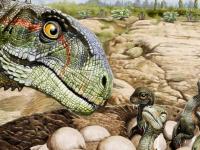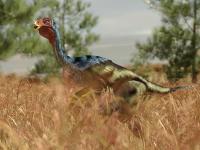How Jurassic Park Predicted The Future

Do you recall sitting in a movie theater in 1993, watching Drs Grant and Sattler driving across the grasslands of Isla Nublar, when a white-suited John Hammond suddenly stands, mouth agape, a look of childlike joy on his face? The camera cuts away and there, real as life, was a dinosaur—a massive Brachiosaurus picking leaves off a tree.
It was as though every dino-dream we had as kids was finally confirmed through the magic of film. Jurassic Park inspired many of us, so we wanted to take a look at some of the best tech predictions from the greatest dino-movie ever made.
Touchscreen computers. Perhaps one of the “greatest” hacking scenes in film comes when Lex looks at Jurassic Park’s computer, locked by the traitor Dennis Nedry (anagram: Nerdy Sinned). “This is Unix,” she says. “I know this.” (LOL).
Lex flies through a clunky GUI to begin resetting the park’s systems: and she does it with a touchscreen. This was a decade before the first touchscreen phones that didn’t require a stylus, and two decades before touchscreen tablets revolutionized how our children will understand interaction. For bonus points, notice the IR-based “hood” around the screen—a grid-based precursor to the technology behind the original Surface table.
Awesome CGI monsters. Go back and watch Jurassic Park again and marvel at how damn good those dinosaurs look. Some of them are puppets, but many are full-screen CGI renders. Jurassic Park was one of the first films to use CGI effects, and the dinosaurs still look better than monsters created two decades later. It was a groundbreaking achievement for Industrial Light and Magic and literally created the bar for how computer effects are still measured today.
Smart Cars. Jurassic Park’s tour begins inside special Ford Explorers, equipped with their own TV screens, CD-ROMs (!), that drive themselves along a track using GPS. Two of those three science-fiction elements have now come to pass—it’s hard to cruise down the highway and not see a minivan or SUV without a kid glued to a DVD player installed into the back of the driver’s seat—and self-driving cars on a massive scale may only be a few years away. That bodes well for the adoption of the bubble cars and trained packs of raptors teased in the Jurassic World trailer.
Chaos (Complexity) Theory. Raise your hand if you actually understood what Ian Malcolm was talking about with chaos theory. If you didn’t, here’s the skinny: using computers, you can model a big complex system if you have enough data, and attempt to predict how a small, seemingly insignificant variable might affect the entire system.
Originally called chaos theory at the time when Michael Crichton wrote the novel, this concept eventually morphed into complexity theory: tiny, seemingly inconsequential changes could actually produce drastically different outcomes with different long-term iterative models. These effects could only be studied with computers, and what once required massive supercomputers to attempt to model can now be done with the same cloud computing systems and data gathering techniques that companies use for resource and customer planning.
It’s too bad that we can’t get someone as awesome as Ian Malcolm to run the data division though.
Source: www.managedsolution.com








